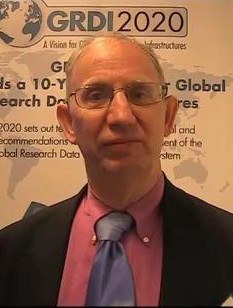- unknown (b.)
Bio/Description
He went to the Department of Energy (DOE) in 1983 to manage the Fusion Energy Theory Program. In 1985-87, he led the effort to expand the scope of the Magnetic Fusion Energy Computing Center to support the entire Office of Science. This transition created the National Energy Research Scientific Computing Center, NERSC, which is widely regarded as the best-managed High Performance Computing Center in the world. During this same period, he managed the integration of the Fusion and High Energy Physics computer networks to become ESnet. In the 1990s, he managed both the Advanced Software Research and the Grand Challenges components of DOE?s High Performance Computing and Communications (HPCC) program, and he led the effort to build DOE2000, the initiative that laid the groundwork for the Scientific Discovery through Advanced Computing (SciDAC) initiative. In addition, he served as the Acting Division Director for the Mathematics, Information, and Computational Sciences Division of ASCR for the last half of the decade. Recently, he has led ASCR?s implementation of the first phase of SciDAC, managed a strategic transition of ESnet to become a key component of the nation?s scientific infrastructure, and the development of two Leadership Class Computing Facilities. His expertise in the installation and operation of high performance computing and network facilities as well as the mathematics and computer science required to make these facilities into tools for scientific discovery is widely recognized outside of DOE. In 1988, he served as DOE?s representative on the Federal Research Internet Coordinating Committee, which was responsible for the integration of the Federal research networks and laid the foundation for today?s Internet. He was one of the principal authors of the Federal Plan for High End Computing and the co-chair of the task force that developed the Federal Plan for Advanced Networking Research and Development. Both of these plans have defined the Federal research landscape for a number of years. In addition to these efforts, he has served for a number of years as the co-chair of the Large Scale Networking Coordinating Group and the High End Computing Interagency Working Group. Before he went to DOE, he spent eight years at the Fusion Research Center in Austin Texas. There he focused on numerical explorations of the impact of pellet injection and radio frequency heating on tokamak plasmas as well as theoretical studies on the impact of plasma turbulence on particle and energy transport in complex geometries. Interestingly, before moving to Austin he spent two years in the market research division of General Foods Corporation, where he applied the fundamental mathematical principles that underlie thermodynamics to develop predictive models of consumer markets. As head of ASCR, he serves as one of the Associate Directors for the Office of Science. He is responsible for the overall management of the ASCR program including: strategic planning; budget formulation and execution; project management; program integration with other Office of Science activities and with the DOE technology offices; and interagency integration. ASCR manages a $450 million portfolio of basic research and scientific user facilities within the Office of Science, including forefront research in applied mathematics, computer and computational science, and high performance networking in support of several high priority Department of Energy mission goals.
-
Gender:
Male -
Noted For:
Lead Magnetic Fusion Energy Computing Center to support the entire DOE’s Office of Science, creating High Performance Computing Center in the world -
Category of Achievement:
-
More Info:


